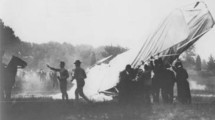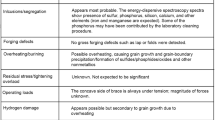Abstract
This chapter presents a status of common cause failure (CCF) modeling. The well known betafactor model is still the most commonly used CCF model. The strengths and limitations of this model are therefore outlined together with approaches to establish plant specific beta-factors. Several more advanced CCF models are also described with a special focus on the new multiple beta-factor model. Problems relating to data availability and estimation of the unknown parameters of the various models are discussed, and ideas for further research are suggested.
Access this chapter
Tax calculation will be finalised at checkout
Purchases are for personal use only
Preview
Unable to display preview. Download preview PDF.
Similar content being viewed by others
References
NUREG-75/014. Reactor safety: An assessment of accident risk in U.S. commercial nuclear power plants, WASH-1400. U.S. Nuclear Regulatory Commission, Washington, D,. 1975.
Hauge S, Hokstad P, Langseth H. Øien K. Reliability prediction method for safety instrumented systems. PDS method handbook, edition. Report STF50 A06031, Sintef, Trondheim, Norway. 2006.
IEC 61508. Functional safety of electrical/electronic/programmable electronic safety-related systems. Parts 1–7. International Electrotechnical Commission, Geneva 1997.
Smith AM, Watson IA. Common cause failures — a dilemma in perspective. Reliability Engineering 1980; 1(2):127–142.
NEA. International common-cause failure data exchange. ICDE general coding guidelines. Technical note NEA/CSNI/ R(2004)4. Nuclear Energy Agency, 2004.
NASA. Probabilistic risk assessment procedures guide for NASA managers and practitioners. NASA Office of Safety and Mission Assurance. Washington. DC, 2002.
Littlewood B. The impact of diversity upon common mode failures. Reliability Engineering and System Safety 1996; 51:101–113.
Parry GW. Common cause failure analysis: A critique and some suggestions. Reliability Engineering and System Safety 1991; 34:309–320.
Paula HM, Campbell DJ, Rasmuson DM. Qualitative cause-defense matrices: Engineering tools to support the analysis and prevention of common cause failures. Reliability Engineering and System Safety 1991; 34:389–415.
DOE. Root cause analysis guidance document. Report no. DOE-NE-STD-1004-92. U.S. Department of Energy, Washington, DC, 1992.
Rasmuson DM. Some practical considerations in treating dependencies in PRAs. Reliability Engineering and System Safety 1991; 34:327–343.
Miller AG, Kaufer B, Carlson L. Activities on component reliability under the OECD nuclear energy agency. Nuclear Engineering and Design 2000; 198:325–334.
Cooper SE, Lofgren EV, Samanta PK, Wong S-M. Dependent failure analysis of NPP data bases. Nuclear Engineering and Design 1993; 142:137–153.
Mosleh A, Rasmuson DM, Marshall FM. Guidelines on modeling common-cause failures in probabilistic risk assessment. U.S. Nuclear Regulatory Commission, Washington, DC, NUREG/CR-5485, 1998.
Childs JA, Mosleh A. A modified FMEA tool for use in identifying and assessing common cause failure risk in industry. Proceedings Annual Reliability and Maintainability Symposium, Washington D.C.; Jan. 18–21, 1999; 19–24.
Hauge S, Onshus T, Øien K, Grøtan TO, Holmstrøm S, Lundteigen MA. Independence of safety systems on offshore oil and gas installations 73-Status and challenges (in Norwegian). Report STF50 A06011, Sintef, Trondheim, Norway, 2006.
NASA. Fault tree handbook with aerospace applications. NASA Office of Safety and Mission Assurance, Washington. DC, 2002.
Rausand M, Høyland A. System reliability theory; models, statistical methods, and applications, 2nd edition. Wiley, New York. 2004.
Johnston BD. A structured procedure for dependent failure analysis (DFA). Reliability Engineering 1987; 19:125–136.
Fleming KN. A reliability model for common mode failures in redundant safety systems. Report GA-A13284, General Atomic Company, San Diego, CA, 1975.
OREDA. Offshore reliability data, 4th ed. Available from: Det Norske Veritas, NO 1322 Høvik, Norway, 2002.
MIL-HDBK 217F. Reliability prediction of electronic equipment. U.S. Department of Defense, Washington, DC, 1991.
Evans MGK, Parry GW, Wreathall J. On the treatment of common-cause failures in system analysis. Reliability Engineering 1984; 9:107–115.
Humpreys RA. Assigning a numerical value to the beta factor common cause evaluation. Reliability’ 87. Proceedings paper 2C; 1987.
Smith DJ, Simpson KGL. Functional safety — A straightforward guide to applying the IEC 61508 and related standards. Elsevier, Burlington, UK, 2005.
Brand PV. A pragmatic approach to dependent failures assessment for standard systems. AEA Technology plc.1996.
Zitrou A, Bedford T. Foundations of the UPM common cause model. In: Bedford T, Gelder PH. van, eds. Safety and Reliability. Balkema, ESREL 2003; 1769–1775.
Zitrou A, Bedford T, Walls L. Developing soft factors inputs to common cause failure models. In: Spitzer C, Schmocker U, Dang VN, eds. Probabilistic safety assessment and management. Springer, Berlin, 2004; 825–830.
Beckman LV. Match redundant system architectures with safety requirements. Chemical Engineering Progress 1995; December: 54–61.
Vesely WE. Estimating common.cause failure probabilities in reliability and risk analyses: Marshall-Olkin specializations. In: Assessment J, Fussell B, Burdick GR, eds. Nuclear systems reliability engineering and risk. SIAM, Philadelphia, 1977; 314–341.
Marshall AW, Olkin I. A multivariate exponential distribution. Journal of the American Statistical Association 1967; 62:30–44.
Atwood CL. The binomial failure rate commoncause model. Technometrics 1986; 28(2):139–148.
Hokstad P. A shock model for common-cause failures. Reliability Engineering and System Safety 1988; 23:127–145.
Apostolakis G, Moieni P. The foundations of models of dependence in probabilistic safety assessment. Reliability Engineering 1987; 18(3):177–195.
Mosleh A. Common cause failures: An analysis methodology and example. Reliability Engineering and System Safety 1991; 34:249–292.
Mosleh A, Siu NO. A multi-parameter common cause failure model. 9th International Conference on Structural Mechanics in Reactor Technology, Lausanne, Switzerland, Aug. 17–21, 1987; 147–152.
Mosleh A, Fleming KN, Parry GW, Paula HM, Worledge DH, Rasmuson DM. Procedures for treating common cause failures in safety and reliability studies. Analytical Background and Techniques. (EPRI NP 5613). U.S. Nuclear Regulatory Commission, Washington, DC, NUREG/CR-4780 1989; 2.
Fleming KN, Mosleh A, Deremer RK A systematic procedure for the incorporation of common cause events into risk and reliability models. Nuclear Engineering and Design 1985; 93:245–279.
Hokstad P, Corneliussen K. Loss of safety assessment and the IEC 61508 standard. Reliability Engineering and System Safety 2004; 83:111–120.
Hokstad P. Common cause and dependent failure modeling. In: Misra KB, editor. New Trends in system reliability evaluation. Chapter 11, Elsevier, Amsterdam, 1993; 411–444.
ICDE. International Common Cause Failure Data Exchange Project. http://www.nea.fr/html/jointproj/icde.html
Baranowsky P, Rasmuson D, Johanson G, Kreuser A, Pyy P, Werner W. General insights from the international common cause failure data exchange (ICDE) project. In Proceedings PSAM 7 ESREL Berlin; June 14–18, 2004:70–75.
Tirira J, Werner W. Lessons learnt from data collected in the ICDE project. In Proceedings PSAM 7, ESREL, Berlin; June 14–18, 2004:82–87.
Johanson G, Jonsson E, Jãnkãlã K, Pesonen J, and Werner W. Insights and results from the analyses of common-cause failure data collected in the ICDE Project for Safety and Relief Valves. In Proceedings PSAM 7, ESREL, Berlin; June 14–18, 2004: 88–93.
SKI, CCF analysis of high redundancy systems, safety/relief valve data analysis and reference BWR application. SKI Technical Report 91:6, Stockholm. http://www.ski.se/extra/document/?instance=1&action_show_document.122.=1 1992.
SKI, Analysis of CCF for hydraulic scram and control rod systems in BWRs. http://www.ski.se/dynamaster/file_archive/030117/f6fefeb66a3209faccd6387d4f804bf2/96%2d77.pdf 1996.
SKI, Investigates events that (potentially) lead to CCF. SKI Technical Report 98:09. http://www.ski.se/dynamaster/file_archive/010803/97837624857/98%2d9.pdf; 1998.
Hokstad P, Maria A, Tomis P. Estimation of common cause factors from systems with different numbers of channels. IEEE Transactions on Reliability 2006; 55(1):18–25.
Knochenhauer M, Mankamo T, Pörn K. Analysis and modelling of dependent failures. In Proceedings from PSAM 7, ESREL, Berlin; June 14–18, 2004; 831–836.
Xie L. A knowledge-based multi-dimension discrete common cause failure model. Nuclear Engineering and Design 1998; 183:107–116.
Kvam PH, Miller JG. Common cause failure prediction using data mapping. Reliability Engineering and System Safety 2002; 76:273–278.
Vaurio JK. Consistent mapping of common cause failure rates and alpha factors. Reliability Engineering and System Safety 2007; 92:628–645.
Mosleh A, Fleming KN, Parry GW, Paula HM, Worledge DH, Rasmuson DM. Procedures for treating common cause failures in safety and reliability studies. Procedural framework and examples. (EPRI NP 5613). U.S. Nuclear Regulatory Commission, Washington, DC, NUREG/CR-4780 1988; 1.
Massieu A, Xingquan W. Fuzzy parametrization of Bulgaria’s nuclear policy decision. Journal of Performability Engineering 2005; 1(2):167–178.
Author information
Authors and Affiliations
Editor information
Editors and Affiliations
Rights and permissions
Copyright information
© 2008 Springer-Verlag London Limited
About this chapter
Cite this chapter
Hokstad, P., Rausand, M. (2008). Common Cause Failure Modeling: Status and Trends. In: Misra, K.B. (eds) Handbook of Performability Engineering. Springer, London. https://doi.org/10.1007/978-1-84800-131-2_39
Download citation
DOI: https://doi.org/10.1007/978-1-84800-131-2_39
Publisher Name: Springer, London
Print ISBN: 978-1-84800-130-5
Online ISBN: 978-1-84800-131-2
eBook Packages: EngineeringEngineering (R0)




